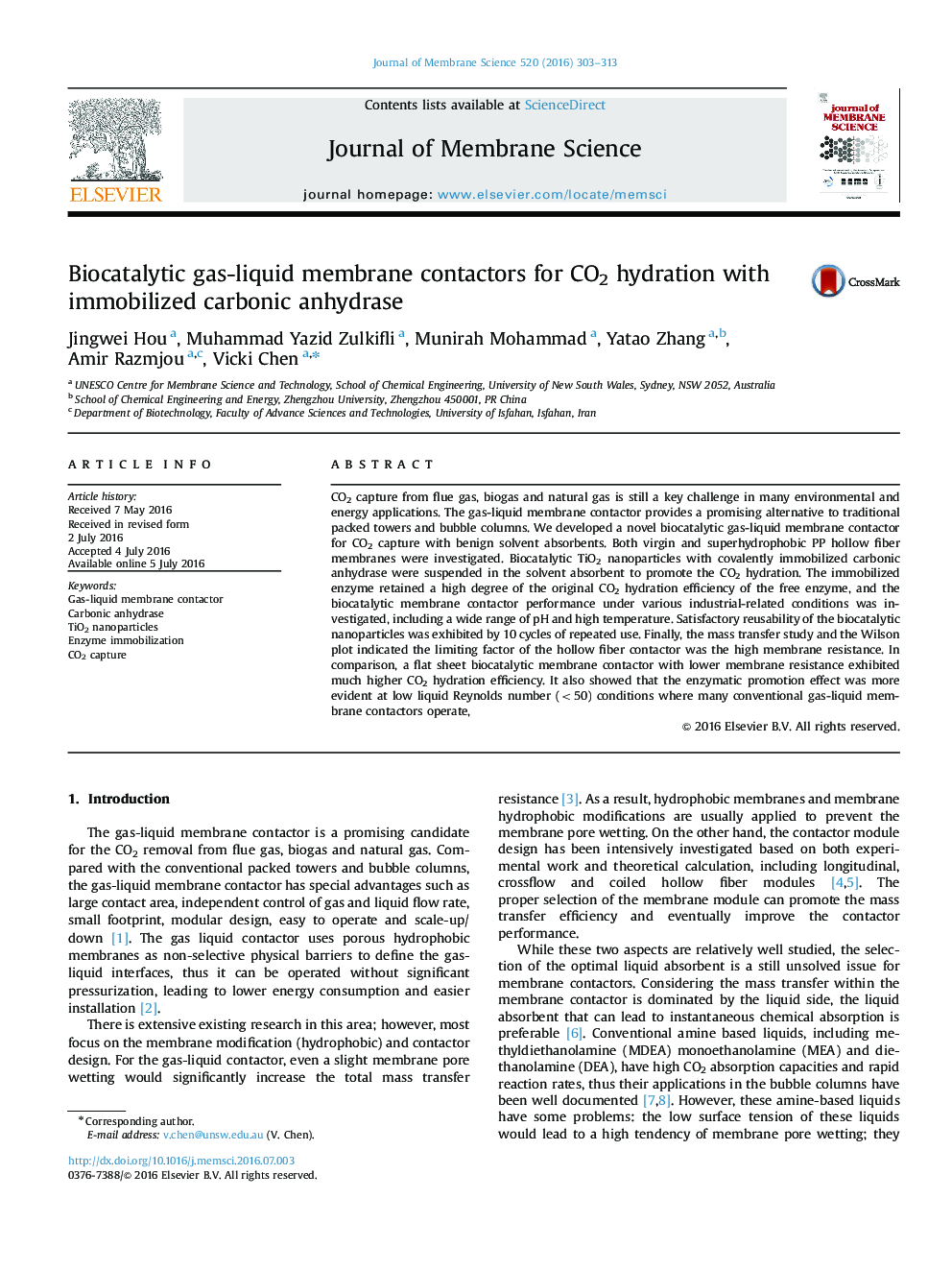| کد مقاله | کد نشریه | سال انتشار | مقاله انگلیسی | نسخه تمام متن |
|---|---|---|---|---|
| 632169 | 1455979 | 2016 | 11 صفحه PDF | دانلود رایگان |

• Biocatalytic nanoparticles were applied to promote CO2 hydration in benign solvents.
• Virgin and superhydrophobic PP hollow fiber membranes were utilized.
• Contactor performance under various industrial-related conditions was examined.
• Biocatalytic nanoparticles exhibited satisfactory reusability.
• Mass transfer study provided the insights to the CO2 transport within the contactor.
CO2 capture from flue gas, biogas and natural gas is still a key challenge in many environmental and energy applications. The gas-liquid membrane contactor provides a promising alternative to traditional packed towers and bubble columns. We developed a novel biocatalytic gas-liquid membrane contactor for CO2 capture with benign solvent absorbents. Both virgin and superhydrophobic PP hollow fiber membranes were investigated. Biocatalytic TiO2 nanoparticles with covalently immobilized carbonic anhydrase were suspended in the solvent absorbent to promote the CO2 hydration. The immobilized enzyme retained a high degree of the original CO2 hydration efficiency of the free enzyme, and the biocatalytic membrane contactor performance under various industrial-related conditions was investigated, including a wide range of pH and high temperature. Satisfactory reusability of the biocatalytic nanoparticles was exhibited by 10 cycles of repeated use. Finally, the mass transfer study and the Wilson plot indicated the limiting factor of the hollow fiber contactor was the high membrane resistance. In comparison, a flat sheet biocatalytic membrane contactor with lower membrane resistance exhibited much higher CO2 hydration efficiency. It also showed that the enzymatic promotion effect was more evident at low liquid Reynolds number (<50) conditions where many conventional gas-liquid membrane contactors operate,
Figure optionsDownload high-quality image (312 K)Download as PowerPoint slide
Journal: Journal of Membrane Science - Volume 520, 15 December 2016, Pages 303–313